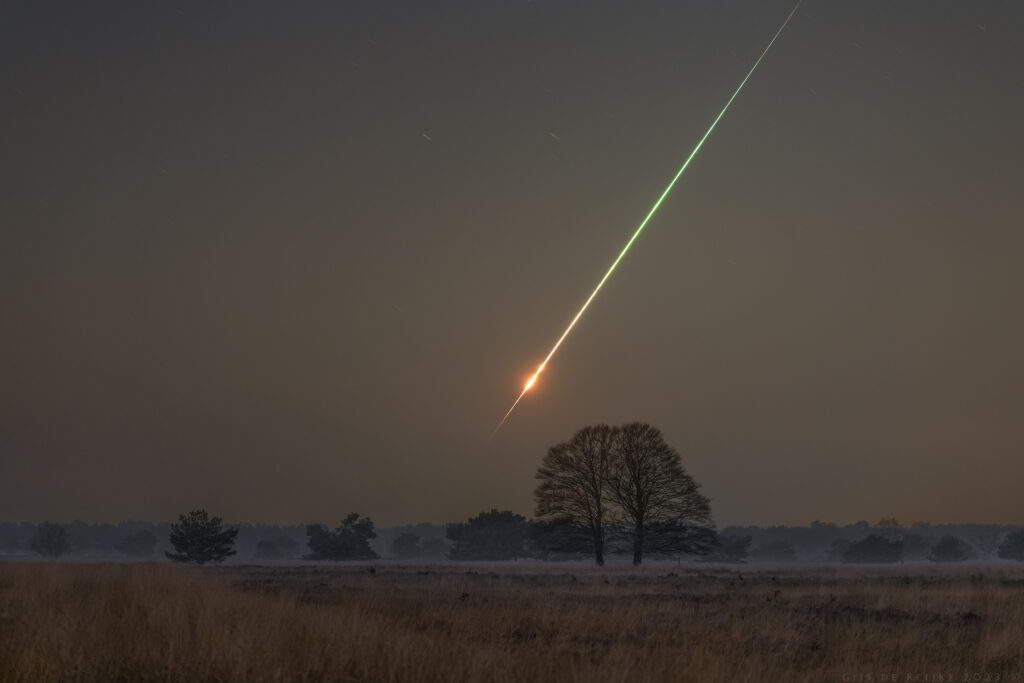On the morning of February 13, residents of France and England could see a very impressive celestial event: a bright fireball that arose as a result of the burning of a meteoroid in the earth’s atmosphere, which received the designation 2023 CX1. The peculiarity of the event was that it was predicted in advance.
2023 CX1 was discovered on the evening of February 12 by Hungarian astronomer Krisztián Sárneczky from the GINOP KHK Observatory. The discovery was promptly confirmed by the staff of the Višnjan Observatory in Croatia. During subsequent observations, they determined that the diameter of the body did not exceed one meter and it was moving at a speed of 14 km/s relative to the Earth. Such objects are classified as meteoroids. They occupy an intermediate position between cosmic dust particles and asteroids.
Calculations carried out by astronomers have shown that 2023 CX1 will enter the Earth’s atmosphere over the coast of Normandy on February 13 at 03:00 a.m., world time — that is, less than seven hours after the discovery. Due to its small size, the meteoroid did not pose any danger to the Earth (bodies of this size are destroyed at a considerable height), but at the same time it promised a very spectacular sight As a result, many amateur astronomers on both sides of the English Channel aimed their cameras at the sky in expectation of a bright event.

The 2023 CX1 has lived up to its expectations. The meteoroid entered the Earth’s atmosphere exactly at the predicted time and over the predicted area. As a result, a lot of very spectacular recordings of the event were made. They are still published on social networks. It is worth noting that this is only the seventh case in history when the fall of a celestial body to Earth is predicted in advance.
Earlier we talked about an interstellar meteorite that fell to Earth.
Follow us on Twitter to get the most interesting space news in time
https://twitter.com/ust_magazine

